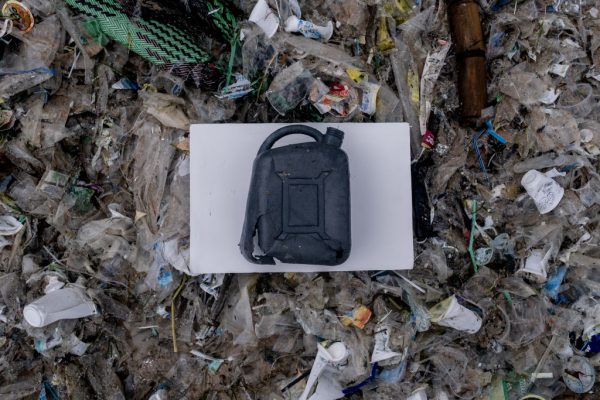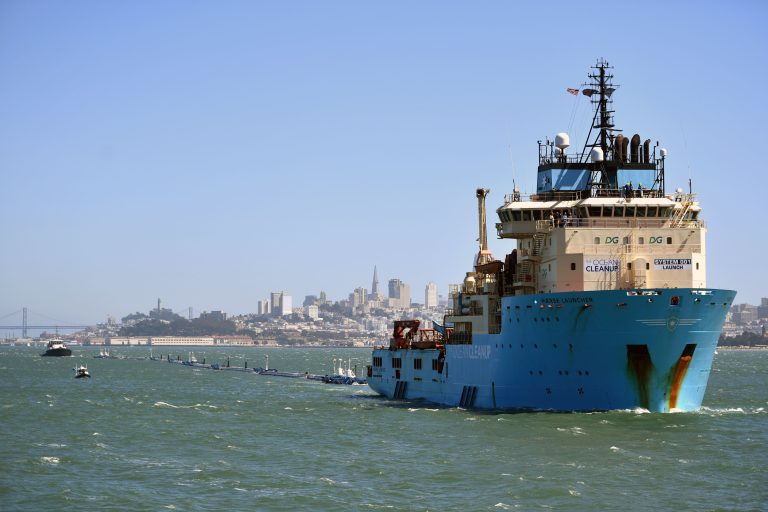Researchers with the Ocean Cleanup project and Wageningen University have discovered that more than 90 percent of the identifiable waste that makes up the North Pacific Garbage Patch (NPGP), originated in just six countries, all major industrialized fishing nations. Their study was published in Scientific Reports on Sept. 1.
The North Pacific Garbage Patch, also referred to as the Great Pacific Garbage Patch, is a collection of marine debris and other waste located in the central North Pacific Ocean. Researchers from the Ocean Cleanup project estimate that the patch covers 620 thousand square miles (1.6 million square kilometres).
It consists of two major areas: the “Eastern Garbage Patch” from California to Hawaii, and the “Western Garbage Patch” that extends from Hawaii to Japan.
While most envision the patches as giant islands of waste, the reality is that much of the patches are fairly low in density, around four particles of waste per cubic meter which prevents detection by satellite imagery.
Researchers sorted and studied 6,000 pieces of trash from the NPGP with the goal of finding the source of the waste. They looked for words and logos printed on the debris to identify the source country. The researchers found that around a third of the pieces of trash were unidentifiable, meaning they were unable to discern what purpose the trash previously served or where it may have originated from.
Success
You are now signed up for our newsletter
Success
Check your email to complete sign up
What they were able to conclude was that around 26 percent of the trash was fishing-equipment based. Plastic buoys and floats made up approximately three percent of the objects they found; a disproportionate amount of mass representing around 21 percent of all trash in the patches.
Of the 6,000 pieces of trash analyzed, researchers were able to ascertain the origin country for 232 objects.
Japan was the country that was found to be the largest contributor to the identifiable waste with 33.6 percent while China was found to contribute the second largest amount of waste with 32.3 percent.
South Korea was found to contribute 9.9 percent of the waste in the NPGP followed by the United States with 6.5 percent, Taiwan with 5.6 percent and Canada with 4.7 percent.
In total, the research concluded that 92 percent of the identifiable waste in these patches had their origin in these six countries. The research also concluded that the trash in the NPGP was ten times more likely to come from fishing activities as opposed to land-based activities.
READ MORE:
- Okra Attracts Microplastics — an Odd Fruit With an Unusual Application
- Antarctic Houseflies? Potential Threat of Invasive Species in the South Pole
- Global Warming May Not Be Our Fault

Environmental impact
Marine plastic pollution ranges in size from large pieces of debris like discarded buoys to bottles and bags down to microplastics, formed from the fragmentation of plastic materials.
It’s estimated that 80 percent of marine debris is plastic. In 2013 it was estimated that there was around 86 million tons of plastic marine debris in the worldwide ocean. This estimate assumed that 1.4 percent of global plastics produced between 1950 and 2013 entered the ocean.
It is also estimated that between 19 and 23 million tons of plastic enters the world’s oceans annually.
In the early 2000s experts discovered that some organisms have actually adapted to live on floating plastic debris, which is allowing them to move with the ocean currents, potentially turning them into invasive species.
Research, conducted in the waters around Australia in 2014, found species of bacteria, on debris as small as a flake, eating into plastic forming pits and grooves.
This led some researchers to speculate that the bacteria may be the reason why researchers haven’t seen the build up of plastic expected, due to ongoing high levels of dumping.
Researchers also discovered plastic microfibers in core samples drilled from sediments at the bottom of the deep ocean.
While organic debris biodegrades in the ocean, plastic debris tends to disintegrate into smaller and smaller pieces down to the molecular level. Some plastic decomposes within a year releasing potentially toxic chemicals like bisphenol A, PCBs and derivatives of polystyrene.
The extremely small pieces of plastic concentrate in the upper water column and become small enough to be ingested by aquatic organisms that reside near the ocean’s surface and as it degrades even more, even microorganisms can ingest and metabolize them, converting plastic into carbon dioxide.
A 2010 report by the Sea Turtle Restoration Project, estimated that plastic pollution in the oceans harms an estimated 100,000 sea turtles and marine mammals, in addition to 1 million other sea creatures each year.
Jellyfish, a species consumed by some sea turtles, are sometimes confused with plastic bags by sea turtles and can kill the animal by obstructing the oesophagus.
A 2004 study concluded that Gulls, living in the North Sea, had an average of thirty pieces of plastic in their stomachs.
There are suspected wide ranging effects on humans. Ocean plastics have entered the human food chain, primarily through the ingestion of shellfish and crustaceans. Ingestion of plastic has been associated with reproductive, carcinogenic and mutagenic effects.
The most well known synthetic compound used in plastics is bisphenol A, which has been linked to autoimmune disease and endocrine disrupting agents, leading to reduced male fertility and breast cancer.














